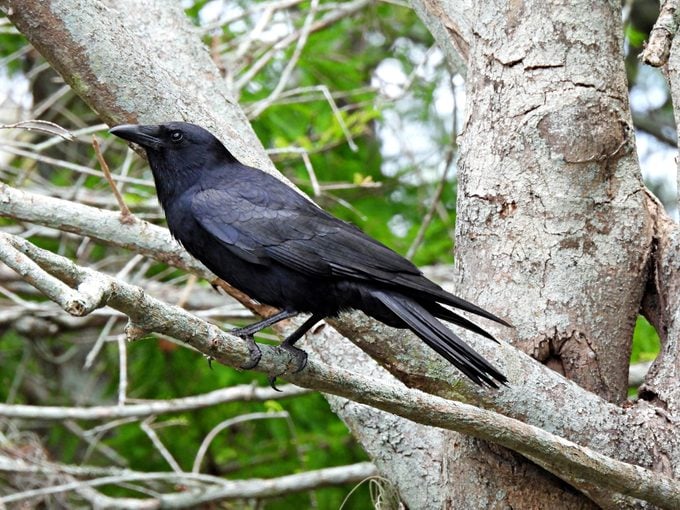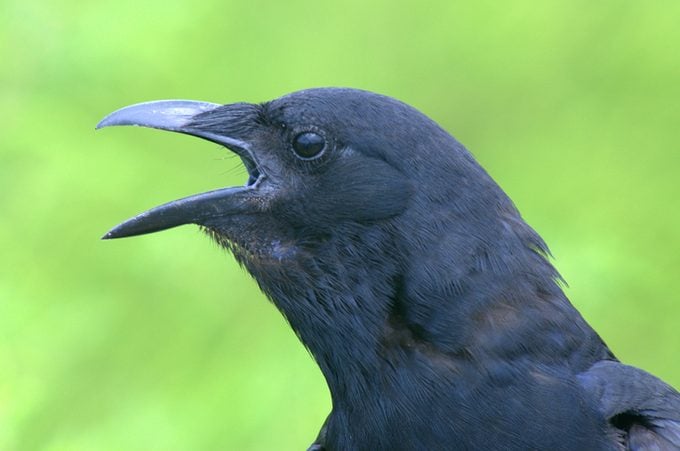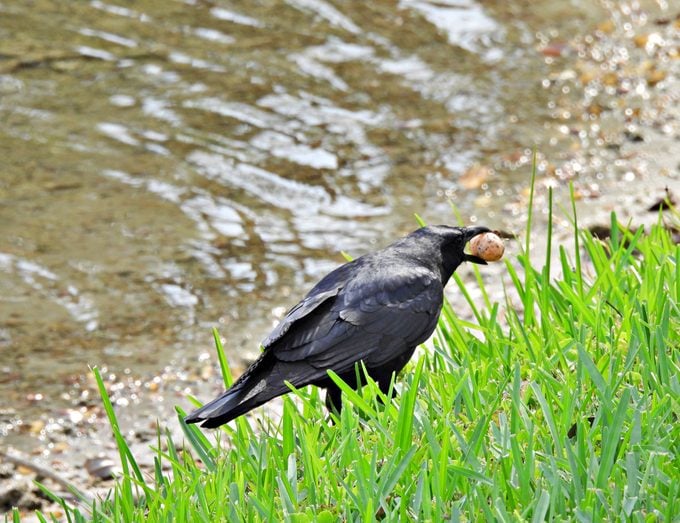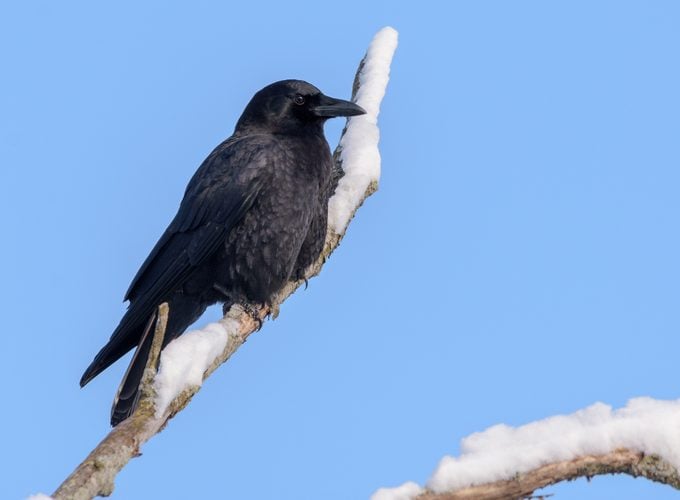Meet the Fish Crow: The American Crow’s Coastal Cousin
Updated: Jan. 26, 2024
Learn what fish crows eat, where they live and how to tell the difference between a fish crow and an American crow — it can be tricky!
What Does a Fish Crow Look Like?

If you’ve seen an American crow before, then you have a good idea of what this other corvid looks like. (The two species are nearly identical). Like American crows, this crow species has a completely black coloring, from their wings to their eyes. There is also some subtle, glossy iridescence on their backs. Males have slightly larger beaks than the females, but overall, male and female fish crows look roughly the same.
Fish Crow vs American Crow: What’s the Difference?

It can be tough to tell the difference between the two corvids — even for the experts. However, fish crows are about five inches shorter than American crows and a bit smaller. They are also more frequently found near bodies of water. American crows tend to live more inland. They have a much wider range than fish crows and live throughout the United States.
An easier way to tell the difference is by listening to them. Fish crows make a nasally uh uh call that sounds noticeably different from an American crow’s caw caw.
What Does a Fish Crow Eat?

Despite their fish-focused name, these birds aren’t picky eaters and will eat almost anything, including garbage. They forage in flocks along shores and in shallow water, but also sometimes in fields. Because they live near water, they eat more crabs, shrimp, turtle eggs and other marine life than American crows.
They also raid nests for food, eating the eggs and nestlings of other birds. The nests of waterbirds, like ibis, herons, terns and ducks, are most likely to get pillaged, but these bully birds will also raid the nests of red-winged blackbirds, blue jays, Northern mockingbirds and more. They are also known to pick up mollusks and drop them from the air to break open the shells.
Do crow sightings have meaning?
Fish Crow Range and Habitat

You’ll see fish crows most commonly along the southeastern coast of the United States, but their range is expanding. They live as far north as New England, along the Mississippi River up into southern Illinois, and as far south as the Gulf of Mexico, and tend to stick to beaches, lakes, rivers, marshlands and estuaries. They will sometimes venture into fields and woodlands for food, though. These corvids don’t migrate but in winter, some fish crows that live more inland will move closer to the coast.
Discover 9 fascinating facts about common ravens.
Nests and Eggs
Instead of one pair forming their own nest, several pairs form a loose nesting colony. This means that they build their nests somewhat near each other, usually within 100 yards or so, sort of like an informal fish crow neighborhood. The nest-building mostly falls to the female and takes about 10 days to complete. She gathers the materials and builds the platform nest with some help from the male.
The nest is made of bulky sticks and lined with soil, bark, moss and sometimes even manure. It’s built wedged into the fork of a deciduous tree. The female lays four or five eggs (can be as few as two and as many as six) and it takes a little over two weeks for the eggs to hatch. Fish crow eggs are a dull blue-green with brown blotches. Although it’s not known for sure, it’s likely that both the male and female fish crow feed their nestlings.
Psst—baby crows are much cuter than you think.




















